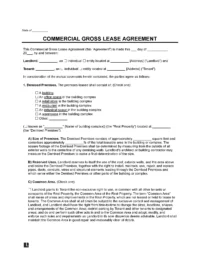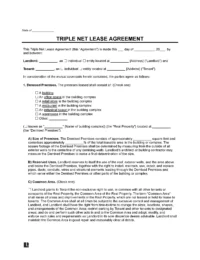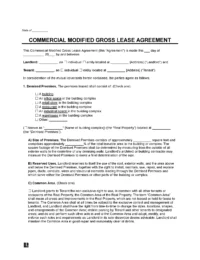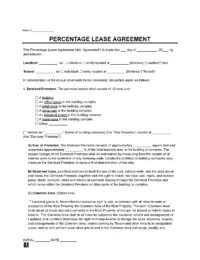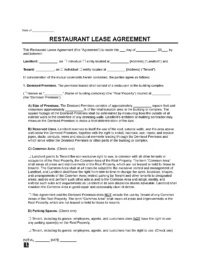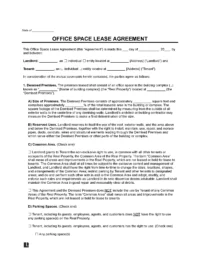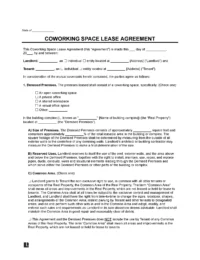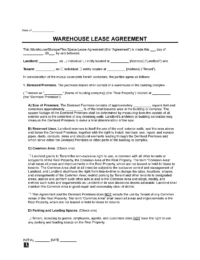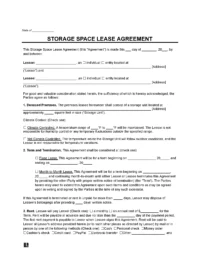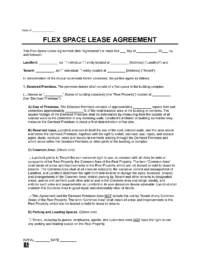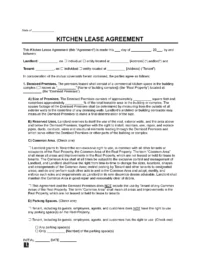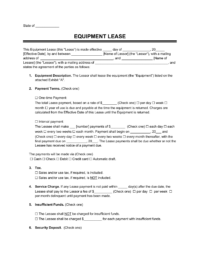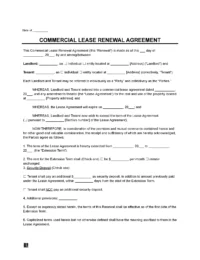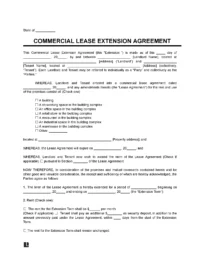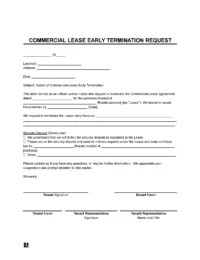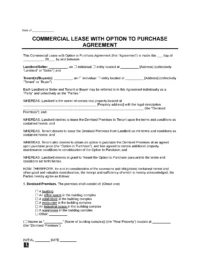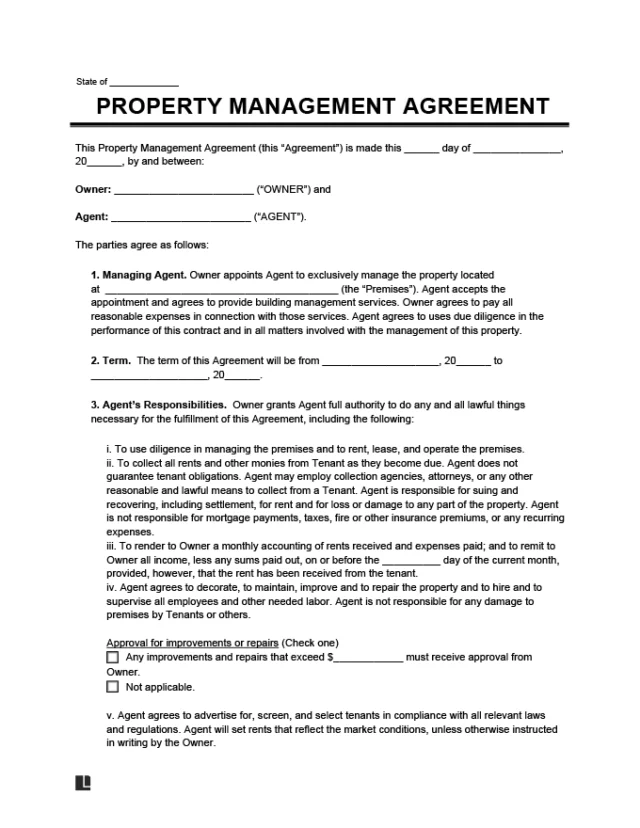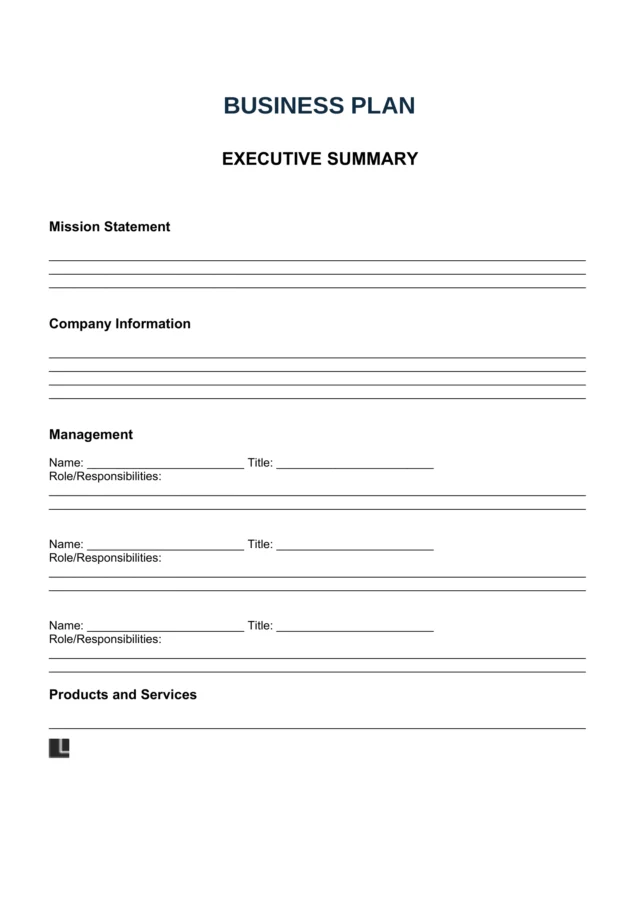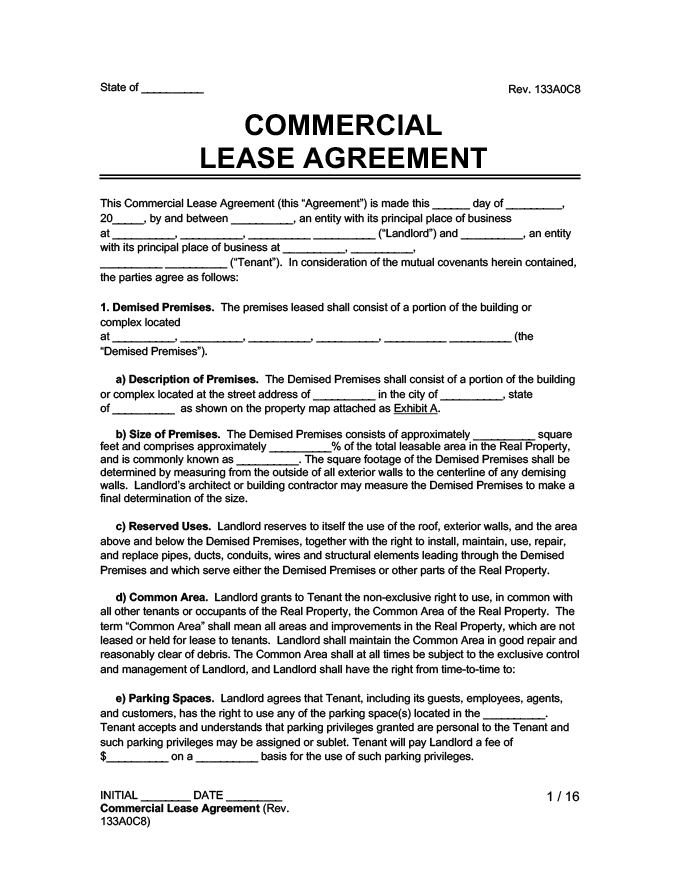What Is a Commercial Lease Agreement?
A commercial lease agreement is a legal document that allows a tenant to rent a property, such as an office, store, or warehouse, for business purposes. It outlines the tenant’s right to use the property in exchange for rent and possibly other fees, such as operating costs, taxes, maintenance, and parking.
Tenants are permitted to conduct business on the premises as long as they adhere to the specified terms. Tenants may also be responsible for property taxes, insurance, and maintenance expenses.
Real estate laws vary by state, so using a state-specific lease template is important to ensure compliance with local requirements.
When Do You Need a Commercial Lease Agreement?
You need a commercial lease agreement whenever you rent out non-residential property to a business. Whether you’re leasing out office space, a retail storefront, a warehouse, or a restaurant location, a written lease protects both parties and clearly defines the terms of the rental.
Common Use Cases:
- Leasing a storefront to a retailer
- Renting an office to a professional services firm
- Providing warehouse space to a distributor or manufacturer
- Leasing a commercial kitchen to a catering company
Not having a written lease can lead to serious issues such as disputes over rent, confusion about maintenance responsibilities, lack of legal recourse, and even violations of state laws. Always put your agreement in writing.
By State
Each state has its own rules for commercial leases, so it’s important to use a lease agreement that matches your state’s laws. A state-specific template makes sure you include the right details, follow local rules, and keep both the landlord and tenant protected.
Choose your state below to download a free customizable commercial lease agreement that meets your legal requirements.
- Alabama
- Alaska
- Arizona
- Arkansas
- California
- Colorado
- Connecticut
- Delaware
- District of Columbia
- Florida
- Georgia
- Hawaii
- Idaho
- Illinois
- Indiana
- Iowa
- Kansas
- Kentucky
- Louisiana
- Maine
- Maryland
- Massachusetts
- Michigan
- Minnesota
- Mississippi
- Missouri
- Montana
- Nebraska
- Nevada
- New Hampshire
- New Jersey
- New Mexico
- New York
- North Carolina
- Ohio
- Oklahoma
- Oregon
- Pennsylvania
- Rhode Island
- South Carolina
- South Dakota
- Tennessee
- Texas
- Utah
- Vermont
- Virginia
- Washington
- West Virginia
- Wisconsin
- Wyoming
Types of Commercial Lease Agreements
There are four main types of payment structures in commercial lease agreements based on how the tenant pays base rent and operating expenses.
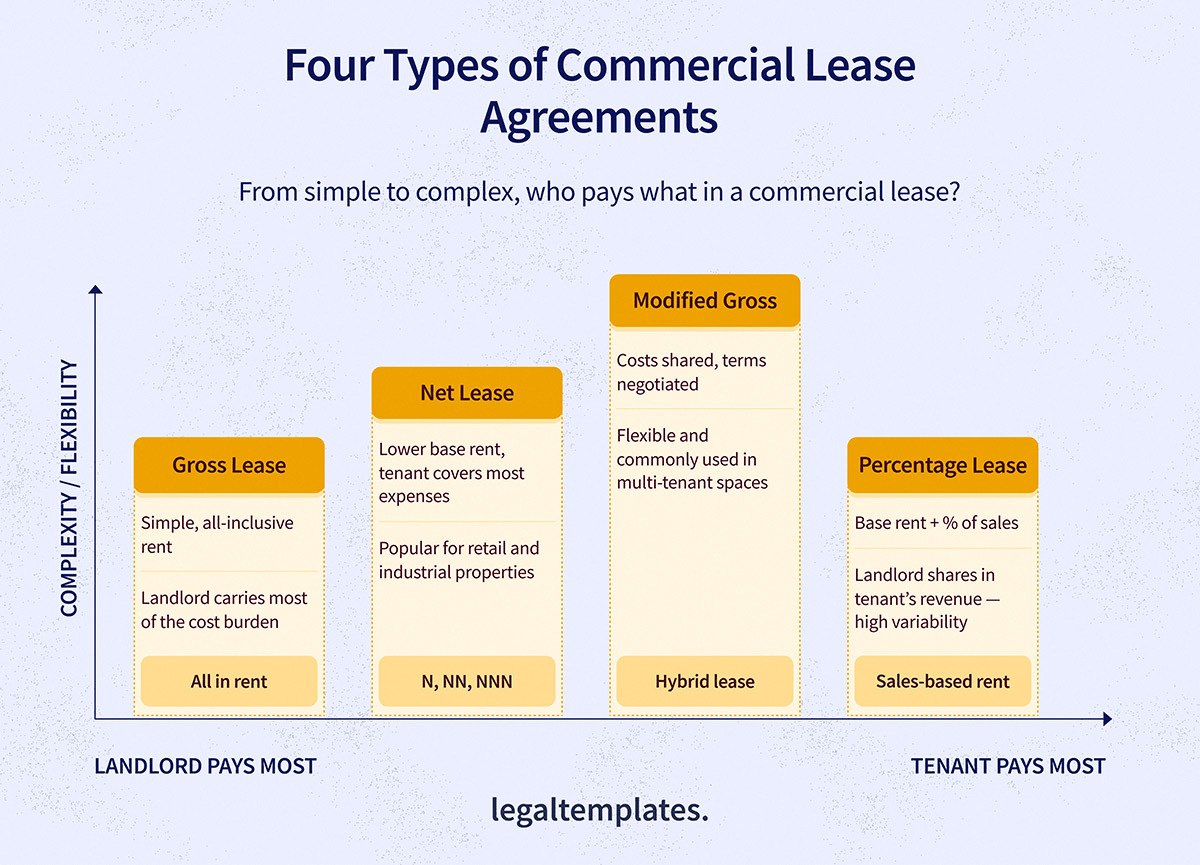
Full Service or Gross Lease
In a full-service or gross lease, the rental rate includes all property operating expenses.. Operating expenses such as utilities, maintenance, and real estate taxes are already factored into the rent.
However, the landlord can add clauses to reserve the right to pass down any future increases in operating expenses to the tenant.
- What Landlords Pay: All property operating expenses, including utilities, maintenance, and real estate taxes.
- What Tenants Pay: The rental rate, which includes all operating expenses. If stipulated by the lease agreement, tenants might also pay for any increases in operating expenses.
- Common Uses: Often used in office buildings and some retail spaces where landlords want to offer tenants a simple, all-inclusive rental rate.
Commercial Gross Lease Agreement Template
Use to establish a landlord-tenant relationship in commercial real estate, covering all costs including taxes, insurance, and maintenance to prevent unforeseen expenses for businesses.
Net Lease
In a net lease, none of the operating expenses are included in the rental rate.
Therefore, in addition to the base rent, the tenant must also pay their proportional share of the three “net” operating expenses – property taxes, property insurance, and standard area maintenance (CAM).
- What Landlords Pay: Landlords typically pay for the structural maintenance of the building.
-
What Tenants Pay: Base rent plus their proportional share of the three “net” operating expenses: property taxes, insurance, and CAM. The specifics depend on the type of net lease:
- Triple Net Lease (NNN): Tenant pays a portion of the property taxes, property insurance, and CAM
- Double Net Lease (NN): Tenant pays a part of the property taxes and property insurance
- Single Net Lease (N): Tenant pays a part of the property taxes
- Common Uses: Common in commercial real estate, particularly for single-tenant properties like industrial sites or standalone retail buildings.
Triple Net Lease Agreement Template
Use to require the tenant to pay all property expenses, including real estate taxes, building insurance, maintenance, and rent and utilities.
Modified Gross Lease
A modified gross lease (or modified net lease) is a hybrid of gross and net leases. In a modified gross lease, the landlord and the tenant negotiate and share the operating expenses.
Usually, the tenant is responsible for the base rent and CAM, and the landlord handles the property taxes and insurance.
Sometimes, the tenant pays base rent only at the beginning of the lease and then pays a portion of the operating expenses later.
- What Landlords Pay: Generally, the property taxes and insurance.
- What Tenants Pay: The base rent and sometimes CAM. The specifics can vary significantly based on what is negotiated in the lease.
- Common Uses: This type of lease is versatile and can be used across various commercial properties, depending on the negotiation between the tenant and the landlord.
Commercial Modified Gross Lease Agreement Template
Use to balance landlord and tenant interests in commercial leases by sharing property expense responsibilities through a combination of gross and net lease elements.
Percentage Lease
In a percentage lease, the tenant pays the base rent on the property and a monthly percentage of the gross revenue from the business operating the rented space.
- What Landlords Pay: Similar to other lease types, landlords might pay for the property’s structural maintenance and, depending on the lease agreement, some operating expenses.
- What Tenants Pay: Base rent plus a percentage of the gross revenue of the business operating within the rented space.
- Common Uses: Primarily used in the retail sector, especially in malls and shopping centers where the success of the tenant’s business directly benefits the landlord.
Percentage Lease Agreement Template
Use to outline an agreement where tenants pay base rent plus a percentage of their monthly sales, aligning landlords' and tenants' interests.
What Payment Structure Should You Use?
Consider how predictable you want monthly costs to be. Gross leases offer simplicity and a more predictable and stable monthly payment, while net and percentage leases can adjust with business performance and expenses.
| Lease Type | Tenant Pays | Landlord Pays | Best For |
|---|---|---|---|
| Gross Lease | Base rent only | All operating costs | Office buildings |
| Net Lease (NNN) | Base rent + taxes, insurance, CAM | Structural maintenance | Retail, industrial |
| Modified Gross | Base rent + some expenses (e.g. CAM) | Taxes, insurance | Office, retail, flex spaces |
| Percentage Lease | Base rent + % of gross revenue | Varies (often structure/major costs) | Retail (malls, shopping centers) |
Types of Commercial Property Leased
Commercial lease agreements can be used for many types of properties, depending on the kind of business. Whether it’s a store, office, or warehouse, the type of space you’re renting affects the lease terms, any changes needed to the space, and the legal rules you have to follow.
Retail Space
This includes storefronts, restaurants, and spaces in malls or shopping centers. These locations are designed to attract foot traffic and are a good fit for customer-facing businesses.
Restaurant Lease Agreement Template
Use it to lease out your restaurant space to tenants or culinary professionals.
Office Space
Used by professionals and service-based businesses. These leases often occur in high-traffic business districts and may include amenities like parking and shared conference rooms.
Office Space Lease Agreement Template
Use this template if you’re renting out an office space where the tenant will operate a business.
Coworking Space Lease Agreement Template
Use a coworking space lease agreement to outline the terms and conditions under which a tenant rents a workspace from a landlord.
Industrial Property
These spaces are built for manufacturing, shipping, or storing goods. Leases are usually long-term and often include large areas and loading docks.
Warehouse Lease Agreement Template
Use it to rent a warehouse to a business tenant.
Storage Space Lease Agreement Template
Use it to rent a storage space or unit to a business tenant.
Flex Space
Flex spaces combine office, storage, and industrial features in one place. They’re great for startups or growing businesses that need a space that can do multiple things.
Flex Space Lease Agreement Template
Use to rent a multi-purpose workspace.
Specialty Commercial Properties
These are unique spaces that don’t fit the usual categories, like salon booths, commercial kitchens, or event venues. They’re often used by small businesses with specific needs.
Booth (Salon) Lease Agreement Template
Use our Salon Booth Rental Agreement template to enable a stylist to temporarily rent a space in your salon.
Kitchen Lease Agreement Template
Use it to easily rent out kitchen space to tenants or food professionals.
Venue (Event Space) Lease Agreement Template
Use to rent a space for an event.
Massage Therapist Booth Lease Agreement Template
Enables massage professionals to lease a booth and operate independently.
Other Commercial Lease Templates
These agreements cover more specialized or less common leasing situations, such as renting parking spaces or business equipment.
Garage (Parking) Lease Agreement Template
Outlines the terms for renting a garage parking space.
Equipment Lease Agreement Template
Use an equipment lease agreement to enable another party to temporarily rent your equipment.
How to Write a Commercial Lease Agreement
A well-drafted commercial lease should clearly outline the expectations, responsibilities, and rights of both landlord and tenant. Below are the key sections you should include when creating a lease agreement:
- Parties Involved: List the full legal names of both the landlord and the tenant. Include their business names (if any) and how to contact them.
- Property Description: Give the full address of the property, the size in square feet, the suite or unit number, and any extras like parking spots or storage areas.
- Lease Term: Write down when the lease starts and ends. If the lease can be renewed, include how that works and how much notice is needed.
- Rent Details: State the base rent amount, payment frequency (monthly or annually), due date, grace period, payment method, and any clauses regarding rent adjustments during the lease term.
- Type of Lease Structure: Define whether the lease is Gross, Net (N, NN, or NNN), Modified Gross, or Percentage, and explain how costs are split.
- Security Deposit: Indicate the deposit amount, whether it earns interest, and terms for refund or forfeiture.
- Permitted Use: Clarify the tenant’s use of the property (e.g., retail store, law office) and any usage restrictions.
- Maintenance and Repairs: Outline who handles specific repairs and upkeep inside the unit and in common/shared areas.
- Improvements and Alterations: State whether the tenant can modify the space, what requires landlord approval, and removal responsibilities at lease end.
- Utilities and Operating Expenses: List which party is responsible for each utility and expense (e.g., CAM fees, property tax, insurance).
- Insurance Requirements: Explain what insurance the tenant must carry, such as liability or property insurance, and whether the landlord must be named as an additional insured.
- Subleasing and Assignment: Indicate if subleasing or lease assignment is allowed, and under what conditions, landlord approval is required.
- Default and Termination: Define what counts as default, how much notice must be given, and the terms for early lease termination.
- Dispute Resolution and Governing Law: Choose how disputes will be resolved (mediation, arbitration, or court) and which state’s laws will apply. If desired, include a clause requiring the payment of the prevailing party’s legal fees in the event of a dispute surrounding the lease.
- ADA Compliance and Hazardous Waste Clauses: Add clauses for ADA accessibility and compliance with environmental laws regarding hazardous materials.
It’s common to begin the process with a commercial lease letter of intent to outline key terms, followed by a commercial lease application to help the landlord assess the tenant’s creditworthiness and suitability before finalizing the agreement.
Commercial Lease Agreement Sample
Below is a sample commercial lease agreement to give you an idea of how each section works. You can edit this form with Legal Templates, customizing it to meet your needs before downloading it in PDF or Word format.
Lease Changes and Tenant Modifications
Commercial leases often need updates during or after the original term. Whether you’re renewing, extending, modifying terms, subleasing to another tenant, or offering a purchase option, use the correct form to make those changes legally binding.
Lease Renewal Agreement
Use this when the tenant wants to continue leasing the property after the original term ends under similar or revised terms.
Commercial Lease Renewal Template
Use it to effortlessly renew the lease for a commercial property.
Lease Addendum
A commercial lease addendum allows changes to an existing lease during its ongoing term without drafting a new agreement. It’s ideal for updating terms like rent, responsibilities, or permitted use.
Commercial Lease Addendum Template
Use this template to formally update or add terms to an active commercial lease.
Lease Extension Addendum
This is a short-term arrangement that extends the end date of an existing lease without rewriting a new agreement. It is often used when both parties need more time before committing to a full renewal.
Commercial Lease Extension Template
Use it to extend an existing lease beyond its original end date.
Early Termination Letter of Commercial Lease
An early termination letter is used when a tenant or landlord wants to end the lease before the agreed expiration date in accordance with the agreement. It helps document the reason for termination and any responsibilities related to the early exit.
Early Termination Letter of Commercial Lease Template
Use this letter to give formal notice of ending a commercial lease before the scheduled end date.
Lease Termination Letter
Use a commercial lease termination letter to formally end a commercial lease before or at the end of the term. It notifies the other party of the termination date and outlines any final responsibilities such as rent, cleanup, or returning keys.
Commercial Lease Termination Letter Template
Use this letter to formally notify the other party of your intent to end the commercial lease early or at the end of its term.
Commercial Sublease Agreement
Use this when a tenant rents out part or all of their leased space to another business (subtenant), with landlord consent.
Commercial Sublease Agreement Template
Let a tenant rent their leased property to a subtenant.
Lease-to-Own Agreement
This lease includes an option for the tenant to purchase the commercial property at the end of the lease or under agreed-upon terms.
Lease-To-Own Commercial Lease Agreement Template
Use to allow tenants to rent and potentially purchase their ideal commercial property, providing flexibility and a path to ownership.

